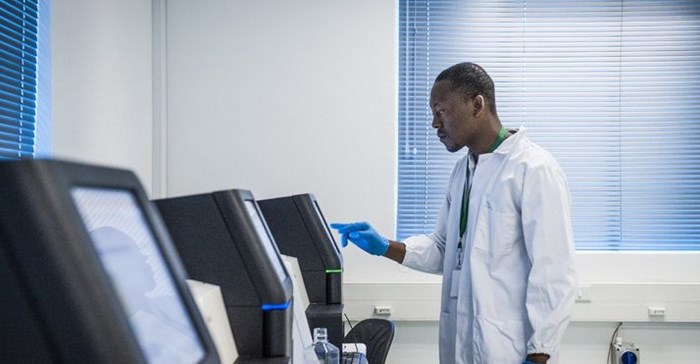As deaths mount, take an inside look at the detectives working around the clock to solve the country's medical mystery.

Photo: Delwyn Verasamy
Bond, James Bond
A mechanical hum fills the small room where James Bond is working to track down a killer. His name is printed in black letters on the side of his body.
But this James Bond isn’t the world’s most famous secret agent. It’s one of three gene-sequencing machines at the National Institute for Communicable Diseases (NICD) in Johannesburg.
Working along its Matrix-inspired counterparts, Neo and Niobe, Bond is the size of an average desktop printer. But the state-of-the-art devices can determine the genetic make-up of animal and plant cells in about three days.
The trio hold the key to tracing South Africa’s deadly listeria outbreak.
Since October, Bond has been on a mission. He has been scouring DNA samples to find the fingerprints of a criminal who has killed more than 80 South Africans – listeria.
What is listeria
It is a common bacteria, lurking in the water, sticking to soil and hiding in the faeces of animals, such as chicken and cows. From there, it makes its way into the food we eat, from meat and dairy products to fruits and vegetables.
And this villain knows that timing is everything.
Once inside its victim, listeria can lie dormant for up to two months, infiltrating its host’s bloodstream before making its presence known through symptoms such as fever and diarrhoea.
Most healthy people who eat listeria-infected food won’t get sick but those with weaker immune systems caused by for instance HIV, diabetes or chemotherapy, are at a higher risk of infection. Pregnant women are also more susceptible to the disease, as are unborn babies, who can contract it from their mothers in the womb.
For this high-risk group, the bacteria can cause blood poisoning or bacterial meningitis, a potentially deadly inflammation of the tissue surrounding the brain and spinal cord, according to United States nonprofit organisation, the Mayo Clinic.
It’s a balmy Friday morning inside the fluorescent-lit laboratories of the NICD’s Centre for Enteric Diseases. Juno Thomas’s footsteps echo in the hospital-like hallways. The centre studies viruses and affecting the intestines.
On a whiteboard on a wall next to her office, a statement in capital letters warns: JUNO THOMAS. NOT GOING ON LEAVE.
“Bacteria doesn’t take holidays, which means I couldn’t take leave in December,” she says.
She and her team have been working against the clock to track down the source of the listeria outbreak.
Worthy opponent
The NICD has reported more than 760 laboratory-confirmed listeria cases since it first declared an outbreak in October last year.
Thomas says the type of listeria making its way across South Africa has proven to be a worthy opponent: “This strain is a typical bad boy. It’s known for causing outbreaks.”
There are 10 types of listeria typically found in the environment but only one species of it, Listeria monocytogenes (the villain in this story), is almost exclusively responsible for foodborne disease, according to a 2014 study published in the Journal of Life & Medicine.
Thomas says Listeria monocytogenes has evolved to become a master of disguise. “It’s a very robust organism. Once it’s stuck on to a surface, it releases a layer of slime that sticks it down like super glue.”
This helps the bacteria to survive undetected in nooks and crannies of food-processing plants and abattoirs for years. Its slimy coat also helps it withstand freezing temperatures.
The World Health Organisation (WHO) has deemed South Africa’s outbreak of the foodborne disease the biggest in history, according to a podcast interview with WHO spokesperson Christian Lindmeier by the United Nations News Centre.
But the source of the outbreak has eluded the country’s scientists so far. Thomas’s voice is urgent as she explains that her small team of about five scientists can only do so much.
Limited expertise and a short supply of expensive equipment has slowed the effort to track the source of the outbreak, as the centre battles to process the ever-increasing number of cases.
“It’s a race against time.”
Read the full story here.


































